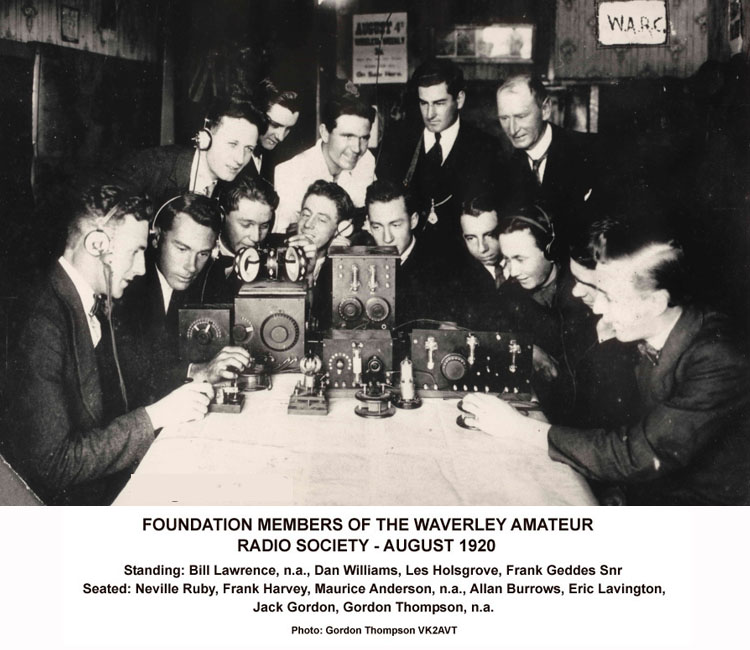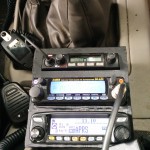Category Archives: Uncategorized
Morse Code Training
How Do You Prove You are Licensed
Now that ACMA have changed their licensing procedure, how do you prove you are licensed?
ACMA no longer send out a printed copy of your licence, only an invoice for the licence fee.
Follow these steps to get a printed copy of your licence,
- Log on to http://web.acma.gov.au/pls/radcom/register_search.main_page
- In the search register box type in your callsign in the blank box next to the go button and press go
- The next window will show your details if you are currently licensed
- Click on your licence number in blue on the left hand side
- On the next screen a copy of your licence will be displayed
- At the bottom of that page there is an adobe PDF symbol
- clicking on the PDF symbol will allow you to download and the print a copy of your licence.
ACMA have advised that the printed copy downloaded in this manner is a Legal Instrument showing the status of your licence just as if they had sent you a printed copy of your licence.
(With thanks to the VK1 Newsletter)
Interesting article on who is using devices like the Boefang
Thanks slashdot
Happy 97th Birthday to the Waverley Amateur Radio Society!
Today the Waverley Amateur Radio Society celebrates its 97th birthday!
On the evening of 27th January 1919, a little over two months after the end of the Great War, the Waverley Amateur Radio Club was formed at a meeting held at ‘Altmont’ 13 Macpherson St, Waverley, the home of Frank Geddes Snr in the eastern suburbs of Sydney.
Amongst those in attendance were some of the first Australian amateur experimenters, first licensed in 1911; Frank Leverrier KC (XEN, 2BK, Vice Chancellor of the University of Sydney & first President of the Wireless Institute of NSW), Malcolm Perry (XCP) and Ray Allsop (XCA & founder of the Raycophone radio company). The founding members of the club also included Frank Geddes Snr, Frank Geddes Jnr, Les Holdgrove, Eddie Bowman, F. Swinbourne, R.D. Charlesworth, Alan Burrowes, C. Doyle, Gordon Thompson (2GT, VK2AVT & Hon Life Member until becoming a silent key at the age of 96 in 2001).
The Waverley Amateur Radio Club was formally incorporated in 1920, and issued its first club license, N249 in the same year. The club was based at ‘Almont’ 13 Macpherson St, Waverley until the 1950s. The club was once affiliated with the ARRL and has been affiliated with the WIA since 1926. Apart from the period of World War II, the Waverley Amateur Radio Society has been continuously licensed since 1920, with the following callsigns: N249 (1920-1922), 2BV (1922-1925), A2BV (1925-1927), OA2BV (1927-1929) and VK2BV (1929-1939 & 1946-present).

https://vk2bv.org/home/waverley-amateur-radio-society-home-page/club-history/qsl-cards/
Knocked up a prototype centre console for the car
I’ve been unhappy with the radio setup in the car. The radios had been installed in a rush and basically left the same way for years.
The start of fixing this was making a prototype console that fits where the unused ash tray is situated in the patrol.
This version needs to be made a little thinner, otherwise I’m happy with the result. Of course the vinyl application needs a lot to be desired.
What to do with a Tytera MD-380
Last weekend at Shmoocon, [Travis Goodspeed] presented his reverse engineering of the Tytera MD380 digital handheld radio –
See http://hackaday.com/2016/01/19/shmoocon-2016-reverse-engineering-cheap-chinese-radio-firmware/ for details
New Gold Coast (QLD) DMR Repater
If you are heading North
Gold Coast DMR repeater up and running.
438.8125 MHz, offset -7 MHz
Yaesu FTM-100DR Firmware update
If you have one of these delightful radios, you will find that there is new firmware available to update the three on-board systems. It is suggested that you read the instructions at least twice before embarking on the updates.
Note also, there is a glitch in new system:
When APRS Mute is turned on the complete radio is muted and not just the APRS band. So you need to turn off APRS Mute by click on the Setting menu and then Radio Menu Settings menu. Then in the setting screens click on APRS and then change APRS Mute to Off.
Good Luck
AX Prefix on Australia Day
On Australia Day, Australian amateur radio operators are allowed to use the special call sign prefix AX in lieu of the normal VK prefix. For NSW amateurs the special prefix is AX2 followed by letters of your callsign.
Celebrate Australia Day on Tuesday 26th January 2016 by using the AX prefix call sign.

